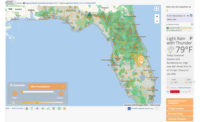 |
| Alan Harding |
What if the U.S. East Coast had a blackout for two weeks or, say, two years. No traffic lights, computers, cellphones, GPS, heat or fresh water. And no nuclear reactors, air traffic controls or satellites. But don’t we have backup generators and transformers? Aren’t systems so advanced that nothing can happen that we couldn’t solve within a few hours? Wrong. For example, a major space weather event could prove otherwise.
Before leaving office, President Barack Obama issued an executive order for “Coordinating Efforts to Prepare the Nation for Space Weather Events” to “enhance national preparedness and speed the creation of a space-weather-ready Nation.” It requires plans by early February 2017.
The International Council on Systems Engineering (INCOSE) acknowledges that this order addresses a critical issue. To be effective, systems perspectives and solutions are required.
Although this executive order originates from the U.S., space weather and its impact on critical infrastructure is an international risk.
Few people have heard of space weather or understand why a nation needs to be space-weather-ready.
 |
| Mike deLamare |
Space weather results from the interactions between the sun and Earth’s magnetic field, interfering with man-made systems and technologies. Events such as solar flares can send a large volume of fast, charged particles into Earth’s path. The effects can couple with systems using long conductors—for example, the electric grid and telecommunication lines—and interfere with anything transmitting electromagnetic waves, such as radio and radar.
When such an event hits Earth, it can cause widespread power-grid failure. Such events occur regularly on a less catastrophic scale, overwhelming air-traffic-control systems and regional power grids, which is what happened during the Quebec blackout of 1989. In 2012, a huge solar storm crossed Earth’s orbit. If it had occurred one week earlier, we would have been hit.
One of the most severe occurrences, the 1859 Carrington event, caused major European and North American telegraph system failures. The likelihood of a Carrington-level event is estimated at about 12% per decade. Although this probability sounds low, we are overdue.
Today, the impact of such an event would be severe, of course. For instance, an extended power outage could deprive 40 million people of power over a span of weeks to years and cost more than up to $2.6 trillion, according to Lloyd’s of London. The Atlantic corridor, from Washington, D.C., to New York City, is at the highest risk for storm-induced power outages. Other high-risk regions include Midwest states and the Gulf Coast.
Systems solutions are imperative. Critical infrastructure consists of interlocking and codependent “systems of systems,” and the failure of one could quickly lead to a domino effect. In addition to the electric grid, these systems include telecommunications, water, sanitation, health care, banking and others.
A diverse cross-section of organizations must collaborate, including governments, utility groups, infrastructure owners, professional and nonprofit organizations, and academics. We must involve those focused on resilience, security, complex systems, risk management, defense and reliability. A systems engineer’s approach is the best approach because it reaches across domains and boundaries. Further, it accounts for the overall strategy and how all the individual systems will work together. Systems engineers need to establish protection and recovery solutions, including an alternative electrical distribution model. Engineers must modify current systems and choose resilient designs.
INCOSE’s Critical Infrastructure Protection and Recovery Working Group was formed to seek international collaboration and organize activities to bring awareness and solutions to space weather and other related threats. It works closely with national bodies and organizations—such as InfraGard, a partnership between the FBI and the private sector—to share information and intelligence and work toward potential solutions. Now is not the time to wait and see what happens. We must plan today to protect our families and livelihoods.
If you have an idea for a column, please contact Viewpoint Editor Richard Korman at kormanr@enr.com.




Post a comment to this article
Report Abusive Comment